In our homes, more and more equipment that requires access to the network appears. Just plugging the provider’s cable into the PC, as before, is no longer enough – to distribute the Internet to computers, laptops, smartphones and other devices, you will need a WiFi router. so we made a list of the Best WiFi routers for home.
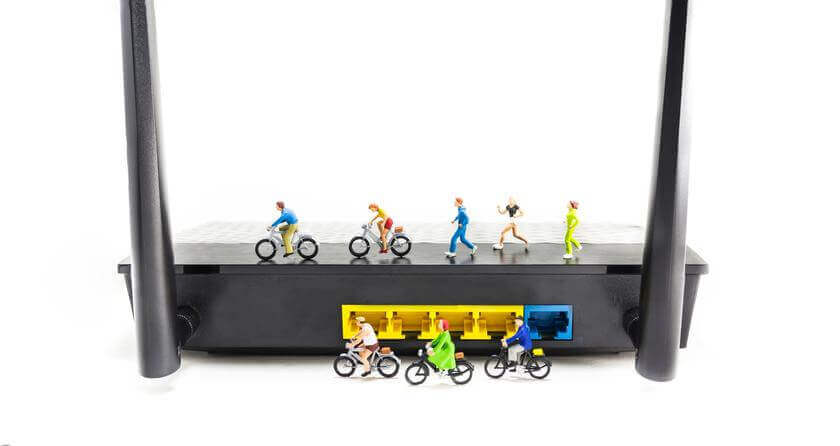
These small boxes with “horns” (or without – antennas can be built-in) can vary greatly in their capabilities and price. Unprepared person no wonder get confused. We decided to ease the task and picked up the most interesting models for different thickness of the wallet. Below you will also find general recommendations for choosing a router for an apartment.
TP Link Archer C3150
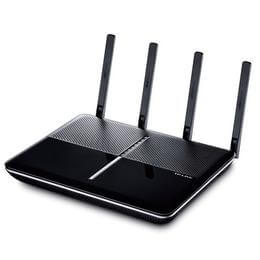
Productive router for home and office
TP Link Archer C3150 offers good equipment, high-quality WiFi coverage and high connection speed. It will not “suffocate” in the home or office network of dozens of Internet connected devices, and the built-in antivirus provides additional protection against cyber threats.
TP Link Deco M5
Seamless WiFi in a big house
If the router does not “finish off” to the far rooms, the TP Link Deco M5 Mesh-system will help solve the problem. It consists of modules that create a seamless WiFi network. Setup is as simple as possible; to expand coverage, it is enough to add a new node. True, with the additional features of the current generation of devices sparsely.
Asus RT AC66U B1
Home router for geeks
Asus RT AC66U B1 supports two bands, can be used as a media server and even act as an alternative to WiFi Mesh. And support for 4G/3G modems allows you to organize a backup channel in case of problems with the main provider. The model is interesting for enthusiasts the possibility of flexible configuration of the home network.
Huawei B315s 22
Router for summer cottage or country house
With the Huawei B315s-22, you can be online there, where the wire providers have not yet reached. Since the router already has a mobile modem, a user just needs to insert a SIM card. Other features of the model include support for external GSM antennas for signal amplification in case of poor communication, as well as the ability to make calls over the mobile network when a conventional handset is connected.
TP LINK TD W8961N
ADSL router for home
The choice of routers with an integrated ADSL modem is not too rich. All that providers usually offer is suitable only for a small apartment, and TP-LINK TD-W8961N is capable of providing a wider WiFi coverage area. This is a good “workhorse” with the support of one range.
Tenda N300
Affordable and long-range router
Simple to configure the router with a sufficiently large range of WiFi and a nice design. If you do not plan to transfer your home network to 5 GHz in the near future, the single-band model Tenda F3 will be a reasonable purchase.
TP Link Archer C2300 Router
In most cases, users want quite simple routers that allow you to read the news on the web and exchange a word with distant relatives via Skype. Difficulties arise with the purchase of additional devices, such as video tape drives or game consoles, which need a good connection. And this is not to mention the fact that in larger apartments basic routers do not “reach out” everywhere, and advanced users need more than such routers can afford. In today’s review, we will meet with TP Link Archer C2300, which should be a good fit in this case. check Tp Link archer c2300 review here
What you should pay attention to
To find the Best routers for home First, a few words about what a router is. It is in many ways similar to a regular computer: it also has a processor, RAM, a drive and an operating system. The router establishes a connection with the provider and distributes the Internet traffic between the connected devices. When a lot of gadgets go online at the same time, it becomes difficult to manage all data streams, breaks and hangs occur. Powerful router can withstand higher loads and will last as long as possible. With this sorted out, go to the practical advice.
Find out the type of connection that the provider uses
If we are talking about a telephone line, you should look towards routers with an ADSL modem and an RJ-11 connector as a WAN port (input). The most common option is Ethernet with an RJ-45 network connector. An important point: connecting via L2TP, PPPoE or PPTP creates an additional load on the processor, so the simplest router can noticeably “cut” the speed. When there is no wired capability, look for a router with an integrated LTE modem. Or with a USB port into which you can insert an external modem. In the latter case, you need to check in advance which 3G / 4G modems the particular model is compatible with. Important: the mere presence of a USB connector does not guarantee that such a function is generally supported.
Calculate how many devices will be connected via cable.
Home PC, gaming console and “smart” TV are always in the same place, and if possible for them it is better to use a wired connection – it is safer and often faster than WiFi. Often, routers are equipped with four LAN ports to which such fixed devices can be connected, but in some models there are only two or three. Consider this moment. And it is not only the quantity that matters.
There are two types of network ports. Fast Ethernet has a maximum data transfer rate of 100 Mbps, and in the case of Gigabit Ethernet it is ten times faster – 1 Gbps. If the internet from the provider is higher than 100 Mbps, choose among devices with gigabit LAN and WAN. This is also a good option “for growth”, so that later you don’t buy a new router when switching to a faster rate plan.
Pay attention to WiFi standards
Wireless routers create around themselves a WiFi network to distribute the Internet without a cable. The simplest models work according to the standard 802.11n in the 2.4 GHz frequency band. It is quite densely occupied – other access points nearby and home appliances (microwaves and baby monitors, for example) can cause serious interference. A more stable connection will provide a router that supports the standard 802.11ac with a frequency of 5 GHz. This range also has a higher data rate limit. The range of “WiFi” will be slightly less, however, 802.11ac devices are backward compatible with 802.11n and allow you to connect gadgets that work only on 2.4 GHz (old laptops, budget smartphones, and so on).
Often, near the name indicates the class of the router, for example, N300 or AC1200. “N” means that the device is clocked at 2.4 GHz, and “AC” indicates support for the 802.11ac standard. The number after the letters is the theoretical maximum throughput for all ranges. On the 802.11n router, you can get up to 600 Mbps (class N600), with two working frequencies – more than 3000 Mbps, if we are talking about top models. Some dual-band routers use two 2.4 GHz channels, but now there are mainly 2.4 / 5 GHz solutions. There are also three-band routers , they create three networks at once: 2.4 GHz and two at 5 GHz.
What you need to know about antennas
Antennas can be external or embedded when nothing sticks out of the device. Sometimes both types are combined in a router. The more antennas, the more stable the coverage and the higher the maximum (theoretical) data transfer rate in a WiFi network. It is recommended to choose a model with two or more antennas, the gain of which is 5 dbi and higher – usually this parameter is indicated in the characteristics. If the antennas are removable, if necessary, you can install more powerful ones and slightly improve the reception of WiFi. The normal position of external antennas is vertical, although no one forbids experimenting with tilt angles.
How to install a router?
There is no universal answer to this question. For uniform coverage of all rooms, it is desirable to place it closer to the center of the house. To keep the signal path as small as possible, find a high place (on the table, for example, or better on the cabinet or fasten directly on the wall). Remember that metal surfaces reflect the WiFi signal.
When one router is not enough, you can expand the coverage area using WiFi repeaters. In most cases, on each repeater, the access speed drops at least twice. Mesh-systems, which consist of several modules and create one large WiFi network, are deprived of this disadvantage. They appeared relatively recently and are still quite expensive. The user also has the option of installing additional routers. To connect them, it is often necessary to lay a power cable or use Power line adapters for communication through a socket (not always suitable because of the increased requirements for wiring quality).
If the router works with errors , try installing the most current firmware version. Some models support automatic updates, for others you will have to download the update on the manufacturer’s website. There is also worth a look to clarify the characteristics – in the descriptions of online stores are often inaccurate.
1. TP Link Archer C3150: for home and office
TP Link Archer C3150 is a premium dual-band router, though not the most expensive in the TP Link line. Equipped with a powerful dual-core processor, two more coprocessors are responsible for operating the wireless network at each frequency (2.4 GHz and 5 GHz).
MIMO ×4 technology allows you to simultaneously transfer data to four devices, providing a higher speed. For convenience, you can enable Smart Connect when only one network is visible, and the router automatically selects the appropriate range. Four external antennas are removable, the “archer” is able to provide good coverage in a large apartment or house, and is also suitable for small offices.
The bandwidth in the 2.4 GHz band is 1000 Mbit/s (4 channels of 250 Mbit/s), at a frequency of 5 GHz – 2167 Mbit / s (4×541 Mbit/s). Behind is a gigabit WAN and four LAN ports, also gigabit. In the updated model (ver.2), channel aggregation appeared – using two cables you can connect NAS storage and get the maximum speed of 2 Gb / s. The router is equipped with USB 2.0 and USB 3.0 ports, it is easy to configure a network printer or media server.
Users can also start the VPN server and enable Trend Micro’s built-in antivirus with parental controls.TP Link Archer C3150 itself is quite large. “You take it in your hands – you wash a thing.” If there is no place on the table or a suitable shelf, holes are made on the bottom wall for mounting on the wall. Above – status indicators and a button to turn off the LEDs when the illumination interferes. All settings – through a familiar web interface or from a smartphone in the Tether mobile app.
4 reasons to buy:
- high performance and speed
- stable operation with a large number of devices
- provides good coverage
- suitable for office space
2. TP Link Deco M5: Seamless WiFi in a big house
In an apartment with a complex layout or a large house, one router may not be enough for a stable WiFi reception in the whole area. The most elegant solution in this case will be Mesh-systems of several routers, working as one unit. They are easy to configure and allow you to expand the WiFi network over time with new nodes. We have already managed to get acquainted with several models of the Deco TP Link line – from the simpler Deco M4 to the almost flagship Deco P7 with the support of Power line technology. “Average” model Deco M5.
The TP Link Deco M5 module looks like a round white box with a “wave” on the top panel and a single LED in the center. There are two Gigabit Ethernet ports, the provider cable can be connected to any of them. The remaining nodes are connected wirelessly (either by wire for lower speed loss, but then some of the Mesh magic is lost). The setup will take just a couple of minutes: we put the new Deco M5 in the WiFi reception area, turn on the network and wait until the working module recognizes its fellow. All operations are performed in the TP Link Deco corporate application for Android and iOS. It has the option of fast roaming, so that switching between mesh nodes happens as seamlessly as possible for the user (client devices must support the 802.11r standard). I did not forget the manufacturer about the built-in antivirus with the option of parental control. At the same time, someone will lack flexible range management, VPN and some other functions of modern routers.
Bandwidth reaches 400 Mbps for 2.4 GHz and 867 Mbps in the 5 GHz band. Since the nodes communicate with each other, the maximum access speed will be lower on a connected laptop or smartphone. Inside each M5 Deco are four antennas. The possibility of mounting on the wall is not provided. You can’t overclock with wired connections – only two network ports per module (one will be busy on the main one) and a power connector. USB for work with printers or external drives are not delivered.
There are separate TP Link Deco M5 and sets of two or three nodes, designed to cover an area of up to 350 m² or 510 m², respectively. this is the easiest and most convenient way to create a seamless WiFi network without dead zones.
3 reasons to buy:
- interesting design
- quick and easy to set up
- WiFi in the whole house without cable laying
3 reasons not to buy:
- high price
- limited functionality
- no web interface
3. Asus RT AC66U B1: home router for geeks
Asus RT AC66U B1 is a powerful enough and “penetrative” dual-band router with support for AiMesh technology. This is Asus’s own development, which allows you to expand your existing WiFi network by installing additional routers. Together they work as a Mesh-system. And if “mesh nodes” have only a basic set of functions, then there are no such restrictions. True, some users say not the most stable work of AiMesh.
Asus RT AC66U B1 is equipped with gigabit ports, in addition to the existing WAN, one of the four LANs can be configured as an input for a backup channel. There is a USB 2.0 port in the back and USB 3.0 in the front. It supports the connection of printers, 3G/4G-modems or drives to which you can upload files without a computer. Setting up a media server is also not a problem. The router definitely falls into the category for enthusiasts and geeks. The MU-MIMO technology provides simultaneous data transmission to several devices (3 at 2.4 GHz and 3 at 5 GHz). The total bandwidth is 1750 Mbit / s. In addition to the web interface, a ASUS Router mobile application is available with a ton of settings.
The current hardware version assumes only horizontal installation, there are no holes for mounting on the wall. According to the owners, the case of the Asus RT AC66U B1 can noticeably heat up. To prevent overheating, it is important to ensure free access of air and avoid direct sunlight.
3 reasons to buy:
- not bad “breaks through” the wall
- works with flash drives and 3G / 4G modems
- and generally very functional
2 reasons not to buy:
- heated (in a closed space is better not to put)
- long reboot
4. Huawei B315s 22: router for summer cottage or country house
Outside the city, where high-speed Internet is not available, it remains to rely on mobile operators. And if you need to distribute WiFi to several devices, the easiest way is to buy a router with a built-in 3G / 4G modem. Such as the Huawei B315s 22 with a slot for SIM-cards – “inserted and running.” The model is not suitable for CDMA connection, only GSM / LTE / UMTS standards are supported. The benefit of modern 3G and 4G-networks cover all large areas.
The manufacturer promises a WiFi coverage area of up to 250 m². It is in ideal conditions, but for a country house (if it is not a three-story mansion) the transmitter power is enough. Only the standard 802.11n at 2.4 GHz is claimed, the bandwidth is 300 Mbps. The speed of 4G-Internet can reach 150 Mbit / s per download and 50 Mbit / s for return, in 3G networks up to 42 / 5.76 Mbit / s. Behind the cover are two mounts for antennas that amplify the signal of the mobile network. Conventional WiFi antennas are suitable for this purpose. With wired connections, the Huawei B315 is all right.
There are three LAN ports and a combined LAN / WAN, you can use the “fixed” Internet. There is also a USB-connector for working with drives or network printers. Another feature of the router is the RJ-11 port, to which a regular home telephone is connected for calls in the network of the cellular operator.
4 reasons to buy:
- built-in 3G / 4G modem
- interesting design
2 reasons not to buy:
- does not distribute WiFi at 5 GHz
- you need a router for cdma internet
5. TP Link TD W8961N: Home ADSL router
Providers are gradually abandoning outdated ADSL technology and are expanding coverage with optical networks, but a faster connection is not yet available everywhere. With a DSL connection, a subscriber can be offered a simple WiFi router with a relatively small reception area. Things are better with TP Link TD W8961N, equipped with two antennas. With it, the data transfer rate over the wireless channel can reach 300 Mbps. Four hundred megabit LAN ports are available.
Drawing on the top panel of the router performs not only aesthetic, but also a practical role – small holes contribute to the natural circulation of air. There are power buttons, WPS and WiFi off. Alas, if in time the user decides to change the provider and the type of connection, it will not be possible to designate a LAN as a WAN.
Main reason to buy
- you need an ADSL router with good WiFi coverage
2 reasons not to buy:
- only works in one range
- router for DSL connection only
6. Tenda N300: Affordable and Long Range Router
You can do only one thing, but do it well. Tenda F3 / Tenda N300 is a single-band model that creates a wireless network at 2.4 GHz with data transfer rates of up to 300 Mbps. The router is equipped with three external antennas and is able to provide WiFi coverage over an area of up to 200 m², the manufacturer says. In practice, everything will depend on the layout, wall thickness and other factors, but the owners of F3 also note a good communication range. Located behind the WAN-port and three LANs, speeds up to 100 Mbps.The router is very easy to configure in the web-interface . Here you can limit the bandwidth for individual devices in your home network. Tenda F3 supports IPTV and bridge mode for expanding the WiFi network. There is a fastening on the wall – it seems to be a trifle, but in budget models this is often forgotten.
3 reasons to buy:
- large WiFi coverage
- easy to configure
- IPTV and other useful features
1 reason not to buy:
- no buttons to turn off the power and WiFi
See also : ASUS RT AC1200G router
Best Router : ASUS ROG Rapture GT AC5300

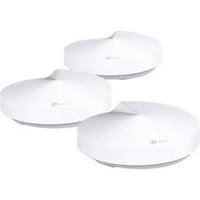
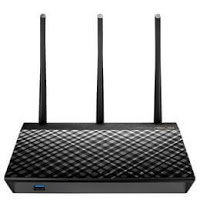
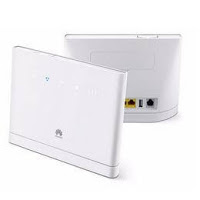
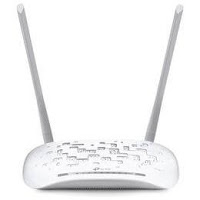
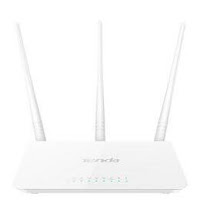
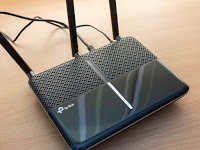
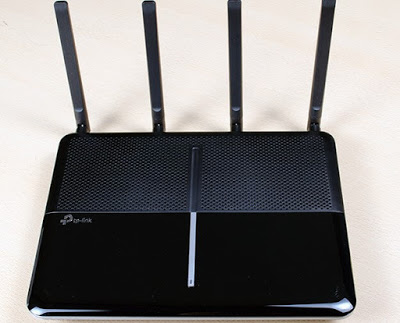
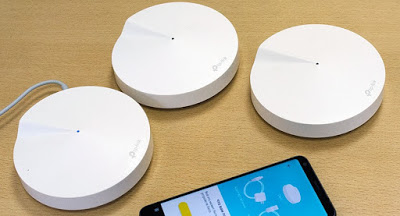
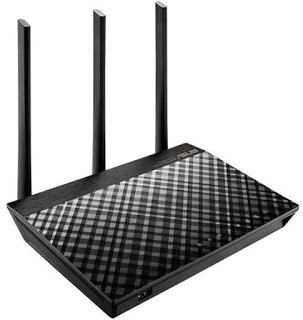
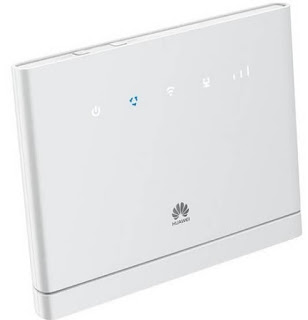
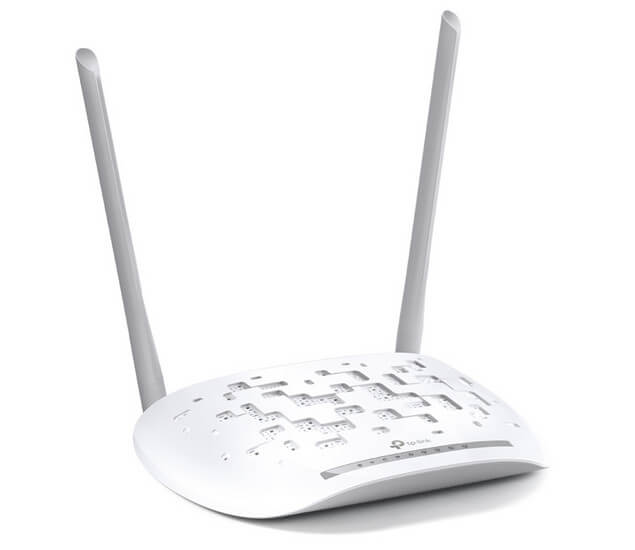
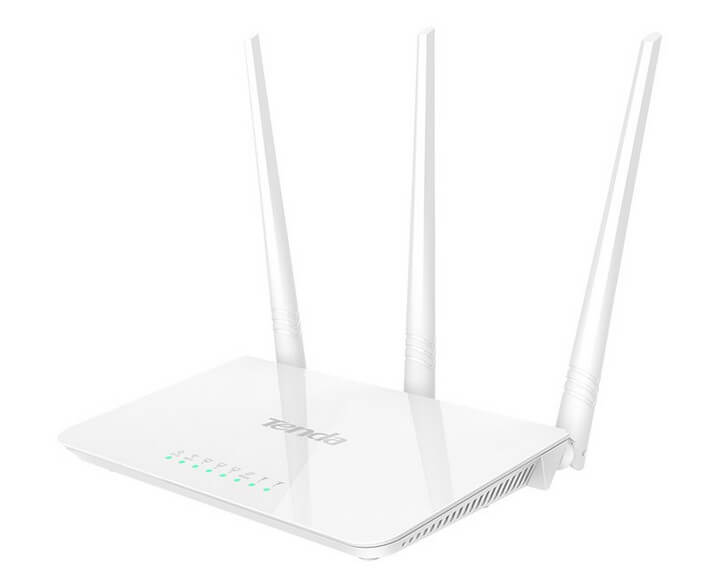
Leave a Reply